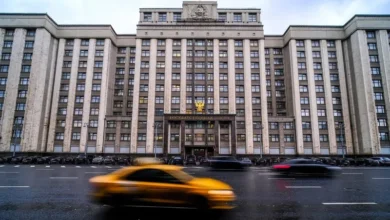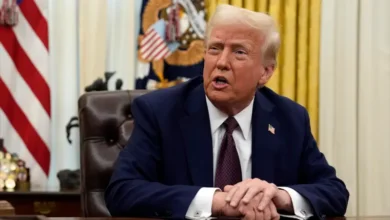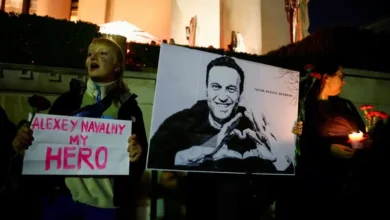Can the US afford to lose its 1.1 million international students?
Khadija Mahmoud* is pulling an all-nighter, filled with caffeine and surviving on adrenalin to pack up her belongings so she can catch the train in the morning from Washington, DC to New York City for her summer internship.
Mahmoud is a 21-year old international student who has just finished her junior year at Georgetown University. She is anxious and worried after her immigration lawyer advised against leaving the country for the summer due to the recent border control policies for international students.On 27 May, the State Department instructed United States embassies around the world to temporarily pause scheduling new student visa appointments, as the Trump administration seeks to expand social media screenings for applicants, the latest in a string of restrictions targeting international students.
“It’s been very turbulent, and equally terrifying with each development that comes,” Mahmoud told Al Jazeera, speaking from her college dormitory in Washington, DC.
Mahmoud isn’t alone in feeling this way. Many other international students say they feel they need to stay under the radar, afraid that even a small issue could get them deported.1.1 million international students
According to NAFSA, a US nonprofit organisation that focuses on international education and student exchange, over the 2023/2024 academic year there were just more than 1.1 million international students studying in the US.
These international students made up 5.6 percent of the nearly 19 million total higher education students across the US.
Together, students from India and China made up 54 percent of the total, with India leading at 331,602 (29 percent) and China at 277,398 (25 percent).‘Major loss for the United States’
Fanta Aw, executive director and CEO of NAFSA, who is herself a former international student, says she knows on a personal and professional level how important the cultural exchange between international students and local communities is, especially in today’s hyper connected world.“I think this is a major loss for the United States; other countries will open their doors and they are already welcoming students,” Aw told Al Jazeera.
“Students want certainty. They want consistency. And they want to know that the system works. And if they continue to see action after action, they’re already losing trust,” she adds.
“Once you continue down this road, you will have years to recover from this, and you may never recover from it. Because by then, more other countries are competing for these same students.”
“We’re seeing Germany. We’re seeing Japan. We’re seeing South Korea. Malaysia has always been a destination for students. The Middle East, with all of the American-style universities – this is what the US is competing with.”Where are international students studying?
Although many international students are concentrated at major universities on the East and West coasts, a sizeable number also study at prominent universities in the Midwest and other parts of the US.
According to data compiled by Open Doors, during the 2023/2024 academic year, New York City hosted the largest number of international students, with 27,247 at New York University and 20,321 at Columbia University. Northeastern University in Boston follows, with 21,023 international students.One such student headed to the Midwest is Noor Ali*, a 23-year-old from Karachi, Pakistan, who is embarking on her masters in journalism on a full scholarship from the university.
Ali has requested her identity be concealed and her institution not be named for her security. Despite having already received her student visa, she’s still concerned about entering the US.
“I got my visa the day that India attacked Pakistan and Pakistan retaliated against India,” she laughs as she explains how she ventured out that day when both nuclear neighbours were engaged in an aerial face-off, far above in the skies.
“Miraculously, the appointment did not get cancelled. And I ended up going there for my interview. And I ended up getting the visa, which was like, insane. I didn’t really know how I got it. But I mean, I’ve gotten it now!” Ali beams, her excitement undeniable at her luck.
Although she had the option to study in Europe, she chose the US because of her familiarity with the country through movies and TV shows. Even without having visited, she feels like she understands American life and culture.“These values of American democracy are about American freedom. And, you know, just a lot of focus on ethics and morality, and it used to be known for its academic freedom, and a lot of focus on diversity.”
Ali’s ideals are not without scepticism or worry. She admits being very scared and has reconsidered her decision several times. Still, she feels encouraged by the pushback the Trump administration’s policies have received lately.
“The core of American democracy or ideals of freedom are getting reinforced,” says Ali. She feels strongly that the cultural experience will be worth it for her.
Crackdown on pro-Palestine students and staff
The Trump administration’s latest step in its crackdown on US universities has particularly focused on international students who have shown support for Palestinians in Gaza over the past year.
“Georgetown has a pretty large international student population compared to other schools in the US, so you’d think that would translate into a lot more advocacy and more grassroots work going on on campus,” Mahmoud goes on to say.










